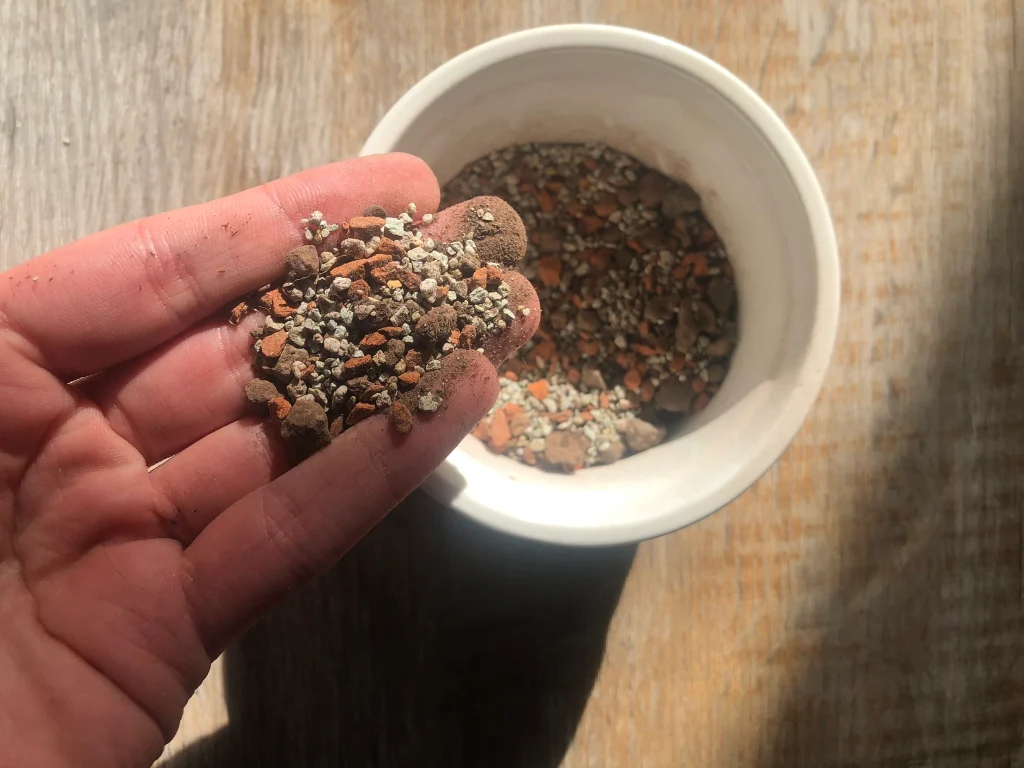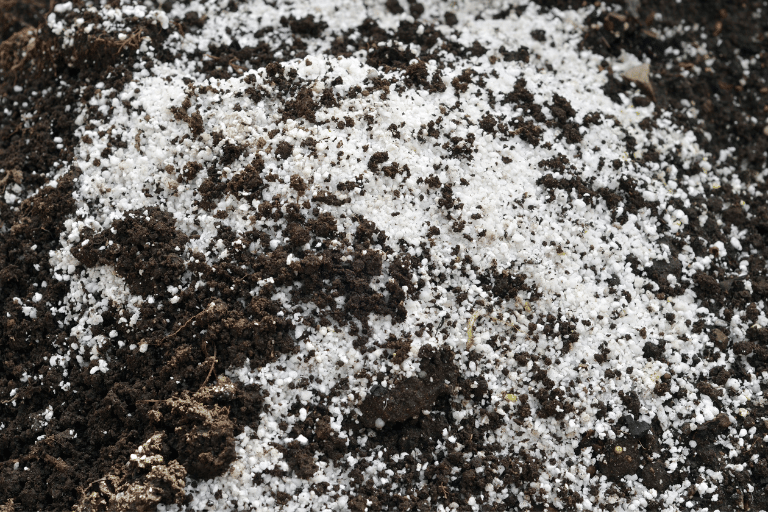Perlite is a common addition to both indoor and outdoor substrates. It’s used to improve soil’s aeration, increase water drainage and retain nutrients in the soil. But there is a thin line between just enough perlite and too much.
For the sake of science, I tried to find the golden ratio. And during my scientific journey, I also was a little too excited and went a little overboard with it. Well, let me tell you, my plants were not happy. They looked like they were floating on clouds, and not in a good way. I had essentially created a soil mix that was too airy, and my plants were struggling to get the nutrients they needed. So you definitely can add too much perlite to the soil.
It’s important to strike the right balance between perlite and other components in your soil mix. But how much perlite should you add to potting soil? Well, that’s a bit of a trickier question. It depends on the type of plants you’re growing, the climate you’re in, and other factors. But we’ll address all these questions, so let’s get started!
What is Perlite?
Perlite is so interesting. Before I started delving deep into this topic, I would never have guessed how perlite is made.
Perlite is made from volcanic glass bearing the same name. This “rock” is formed when lava cools rapidly and traps water molecules inside the glass structure. The result is a lightweight, porous material.
These glass rocks are then mined and heated to very high temperatures. This causes the trapped water molecules to expand rapidly, forming air pockets within the perlite structure. And once cooled, it’s graded and packaged for use.
Because perlite is essentially made up almost entirely of air, it’s really lightweight, which helps prevent soil compaction, so oxygen, water, and nutrients can flow better around it.
Additionally, perlite is pH neutral, Which means it won’t affect the acidity or alkalinity of your soil, and you don’t have to balance it with anything else.
There are several types of perlite available on the market, differing mainly in coarseness. Coarser perlite is better for plants that require high drainage and aeration, such as cacti and succulents. You can see that when you buy specialized succulent soil mix, that it’s nearly made out of different little rocks.
On the other hand, fine perlite is best suited for plants that prefer a consistently moist environment, such as ferns and some tropical plants.
Should you Add Perlite to your Soil Mix?
Perlite can be an excellent addition to soil mixes to improve soil drainage and aeration; however, it’s not mandatory. Your plants will probably do just well without it.
Plus, it’s likely that your potting mix already contains a small amount of perlite. Manufacturers love to add perlite to their mixes because it’s cheap and fills out space really well. Recently, even garden soils contain perlite. But you should not interchange potting and garden soil, as they are completely different.
Benefits of Using Perlite
- Improved drainage
- Increased aeration
- Improves soil structure
- Reduces soil compaction
- Neutral pH
- Doesn’t decompose
- Non-toxic, suitable for organic gardening
- Inexpensive
When to Not Use Perlite
Although perlite is usually a great addition to potting soil, there are situations where it may not be beneficial for your plants. Despite its advantages, there are times when perlite may restrict optimal water flow or destroy even distribution of nutrition in lighter soil mixes.
Disadvantages of Perlite
- Improved drainage may cause the soil to dry out
- Can be dusty, which may be an issue for individuals with respiratory sensitivities
- When using light soil, it can move around and disrupt even distribution
Can you Add too Much Perlite to the Soil?
Yes, it is definitely possible to add too much perlite to the soil. This is bad for plants because it’ll rapidly shorten the time it takes for the water to drain. When this happens, the roots have significantly less time to absorb water and nutrients. This can result in stunted growth, wilting, and even death.
But what is the right ratio?
How Much Perlite to Add to Soil
There is no one-size-fits-all answer to the perfect perlite ratio. However, a general rule of thumb is to aim for a perlite ratio between 10 to 20 percent in your soil mix.
For cacti and succulents, or in general, plants that require more drainage, coarser perlite is recommended. If you have finer perlite that you want to use, I wouldn’t be afraid to higher the ratio to up to 30 or even a bit more percent.
I know that terms like “soil ratio” might seem complicated to some. In this context, the percentage ratio refers to the volume of the soil mix. But definitely not on weight. If you based the mix on weight, you would be adding a pile of perlite, which would make the majority of the volume.
Typically, when I mix soil with perlite, I use a cup and add four cups of soil to one cup of perlite. And depending on the amount of mix I need, I use bigger or smaller cups. Doing it this way, you’ll get a perfect 20% ratio.
However, it’s important to keep in mind that the majority of potting soils already have perlite added by the manufacturer. Depending on the purpose of the soil, it typically contains around 5% perlite already. Before adding more, check the package details so you don’t add too much.
Bottom Line
Adding perlite to your potting mix has several advantages, such as improved drainage and aeration. The amount of perlite must be used in a controlled ratio. Too little perlite won’t likely do any harm, but using too much of it will faster the drainage rate, and the roots won’t have time to properly absorb all the nutrition.
As a rule of thumb, you should stick with a 20% perlite-to-soil ratio.













